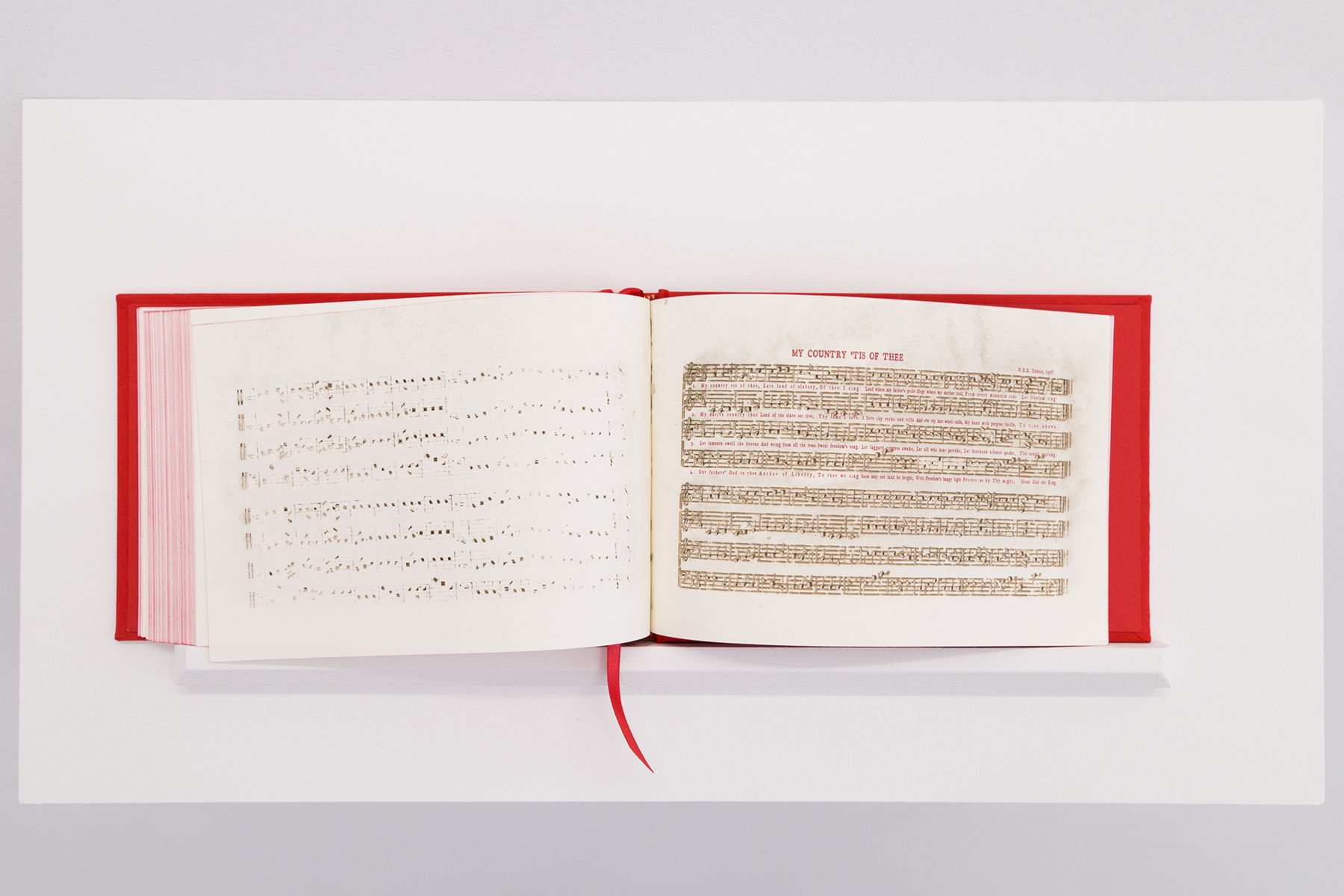
Bethany Collins
America: A Hymnal
2017
Book with 100 laser cut leaves (AP1, Special Edition of 25)
Bethany Collins’s America: A Hymnal is a compilation of one-hundred different versions of the popular anthem “My Country ‘Tis of Thee” that were written between the eighteenth and twentieth centuries. In keeping the lyrics legible but removing the sheet music throughout all the versions, Collins echoes the historical process of rewriting the song. She asks viewers to consider what unity, if any, “My Country ‘Tis of Thee” represents, or if the ideal of freedom is best captured by the traditions of protest and reappraisal that America: A Hymnal embodies.
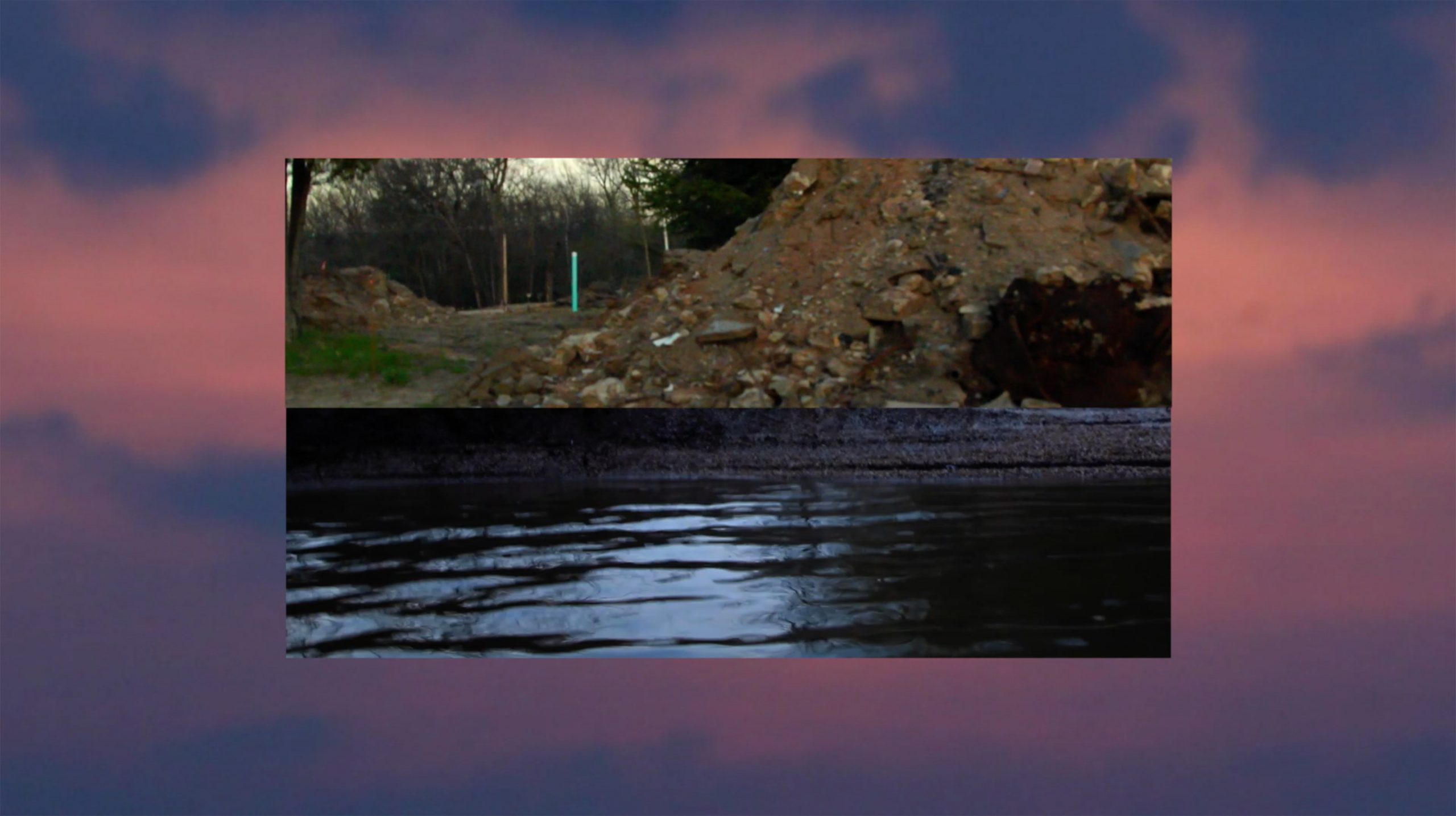
Kunįkaga Remembers Red Banks, Kunįkaga Remembers the Welcoming Song
2014
HD Video (9 mins., 20 secs.)
In Sky Hopinka’s short film, his grandmother’s recollection of the Hočąk village that existed in Red Banks, Wisconsin, prior to European contact is contrasted with images of paintings that Hopinka encountered at a local museum, which depict the French explorer Jean Nicolet landing in the area. Sentences begin to scroll across these painted images and eventually overlap each other in disorienting ways. The instability of the text mirrors that of the historical narrative, demonstrating how creation myths are constructed from both native and settler perspectives.
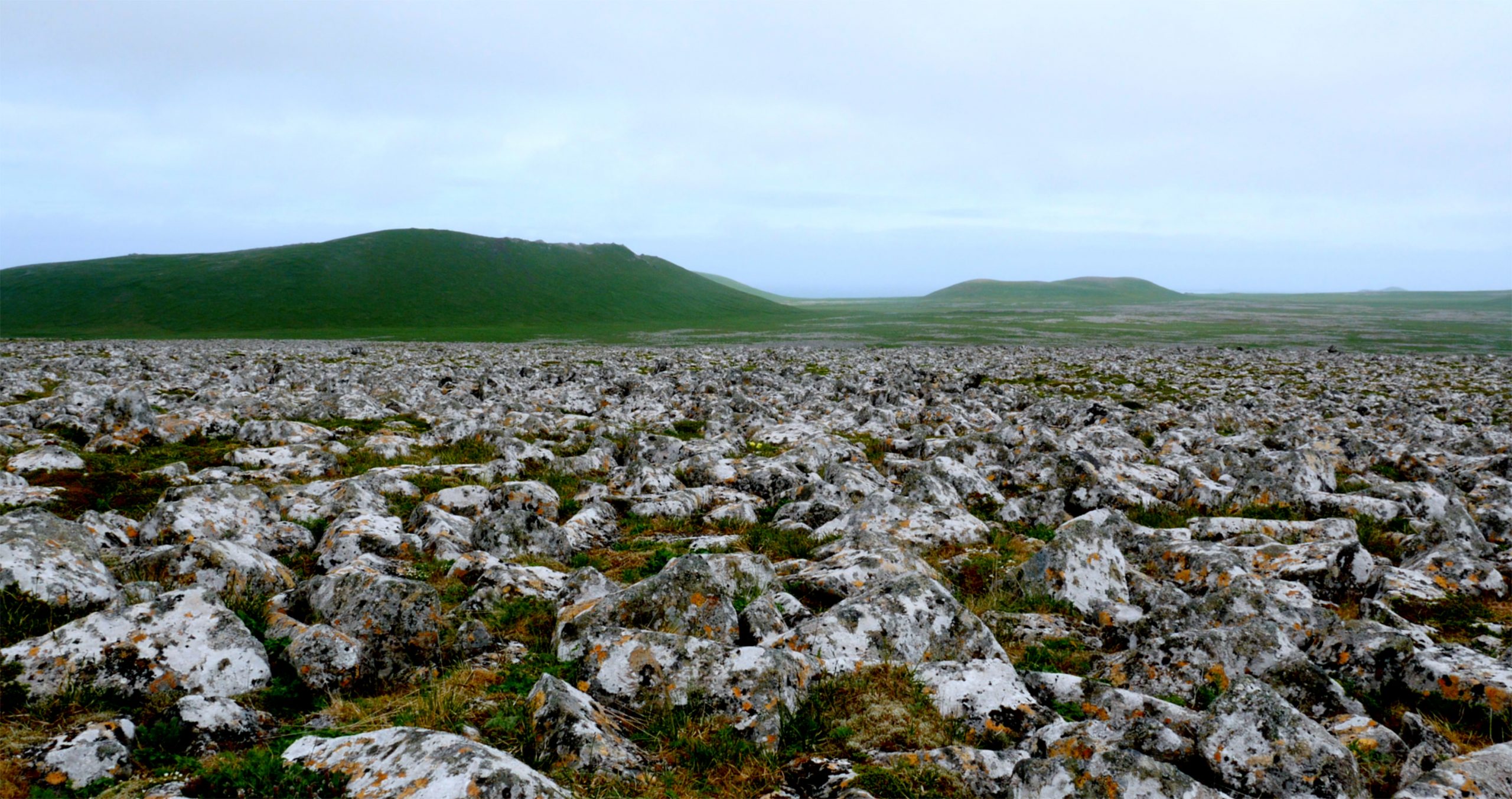
Sky Hopinka
Visions of an Island
2016
HD Video (15 mins., 3 secs.)
In Visions of an Island, Sky Hopinka visits an island in the Bering Sea (near the very limits of the U.S. border). An Unangam Tunuu elder describes this land, as well as the animals and people who inhabit it, and Hopinka’s visual and aural impressions of the land accompany his dialogue. Teachers and students invent games, suggesting that ways of knowing and relating to the island might be preserved through the revitalization of the Unangam Tunuu language.
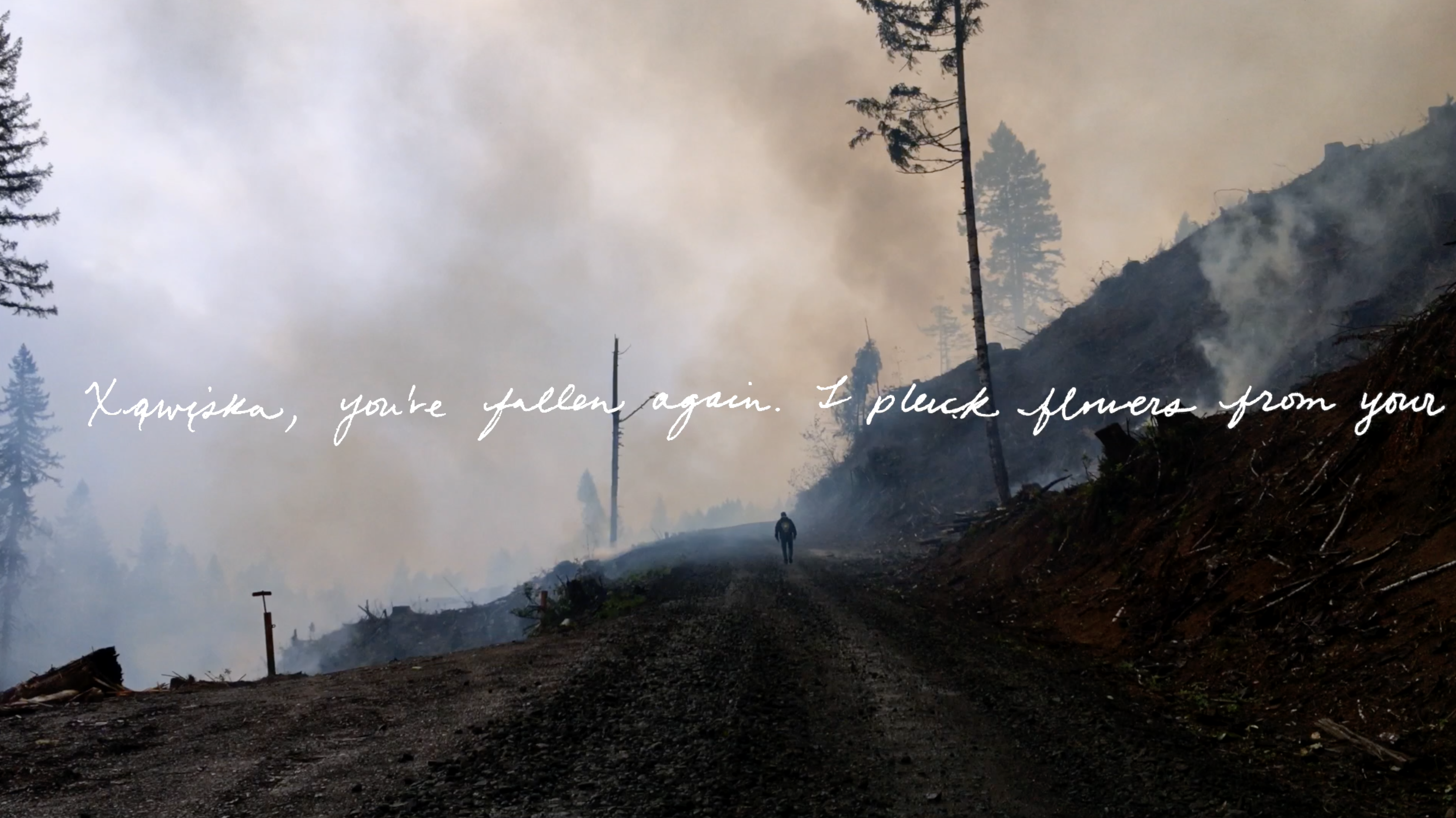
Sky Hopinka
Kunįkaga Remembers Red Banks, Kunįkaga Remembers the Welcoming Song
2014
HD Video (9 mins., 20 secs.)
Collection of Helyn Goldenberg and Michael Alper
In Sky Hopinka’s short film, his grandmother’s recollection of the Hočąk village that existed in Red Banks, Wisconsin, prior to European contact is contrasted with images of paintings that Hopinka encountered at a local museum, which depict the French explorer Jean Nicolet landing in the area. Sentences begin to scroll across these painted images and eventually overlap each other in disorienting ways. The instability of the text mirrors that of the historical narrative, demonstrating how creation myths are constructed from both native and settler perspectives.
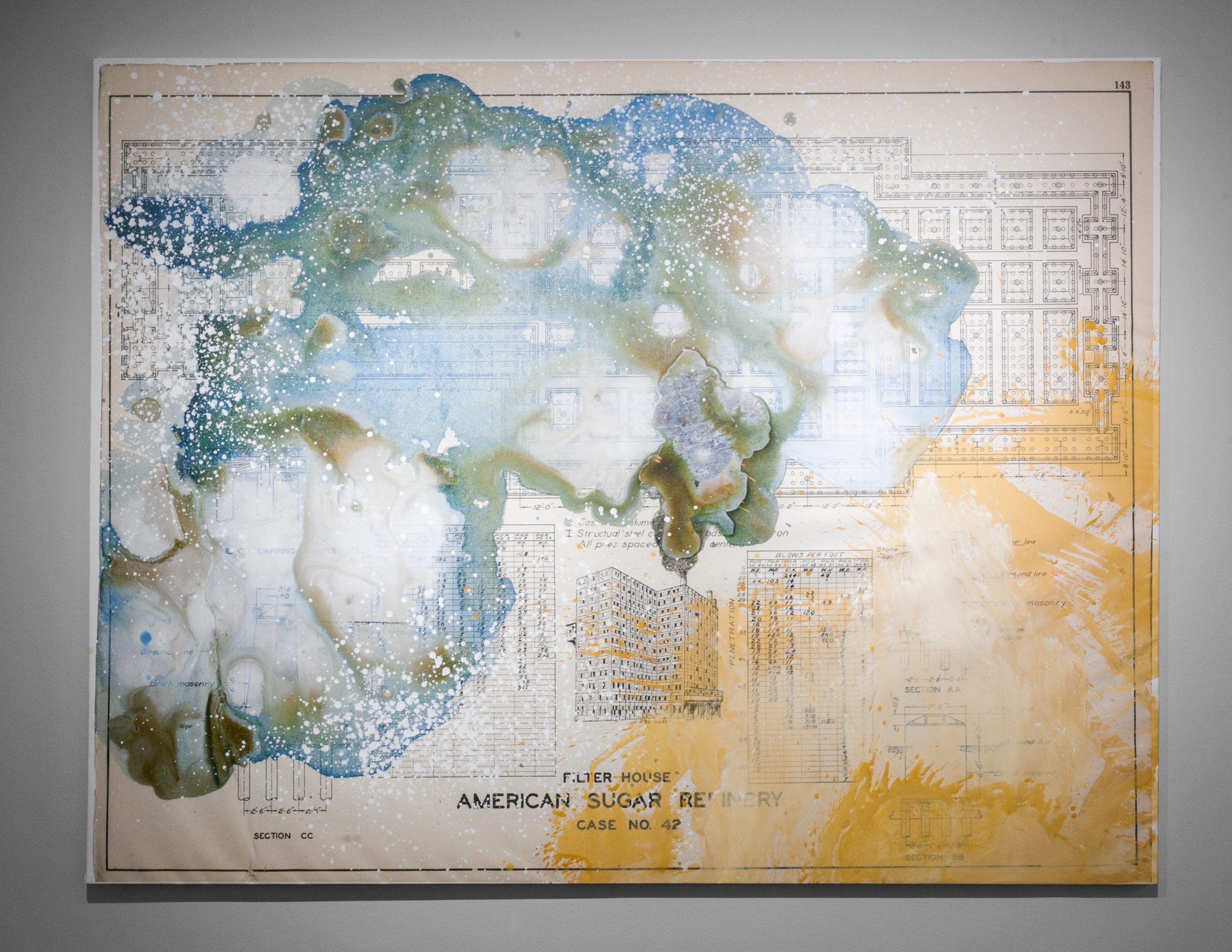
Firelei Báez
living monuments in historical chapters
2018
Acrylic and ink on canvas
Collection of Nish de Gruiter
Courtesy of the artist and James Cohan Gallery
Firelei Báez’s living monuments in historical chapters reproduces a large-scale plan of the American Sugar Refinery, overlaid with cloud-like distortions and sprinklings of white paint that resemble powdered sugar. The title of this work alludes to the history of slave labor being used in Caribbean sugar plantations; “living monument” brings to mind a form of economic subjugation that persisted even as slavery’s legality did not.
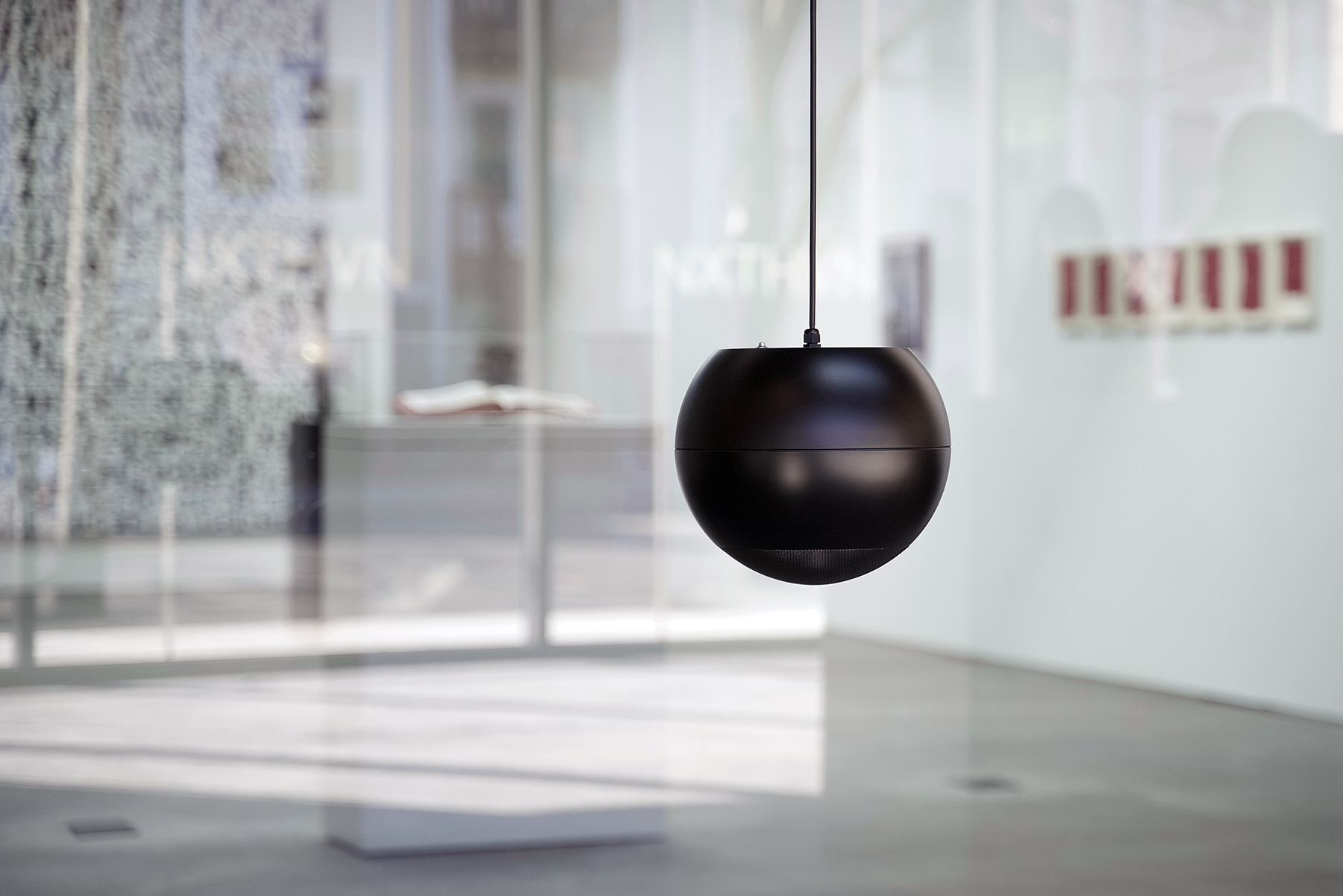 Jesse Chun
Jesse Chun
voiceless consonants
2019
Audio (2 mins.), airport speaker, wire, amp, steel bracket
Courtesy of the artist and Kavi Gupta Gallery
Jesse Chun’s soundscape voiceless consonants projects the audio component of a YouTube tutorial video, in which non-native speakers respond to the tutorial’s demonstrations of the “proper” pronunciation of American English. In deconstructing such tutorials, Chun addresses the absurdity of the idea that non-native speakers need to fit a national standard of English, the language that has historically controlled and presently dictates cultural narratives worldwide.
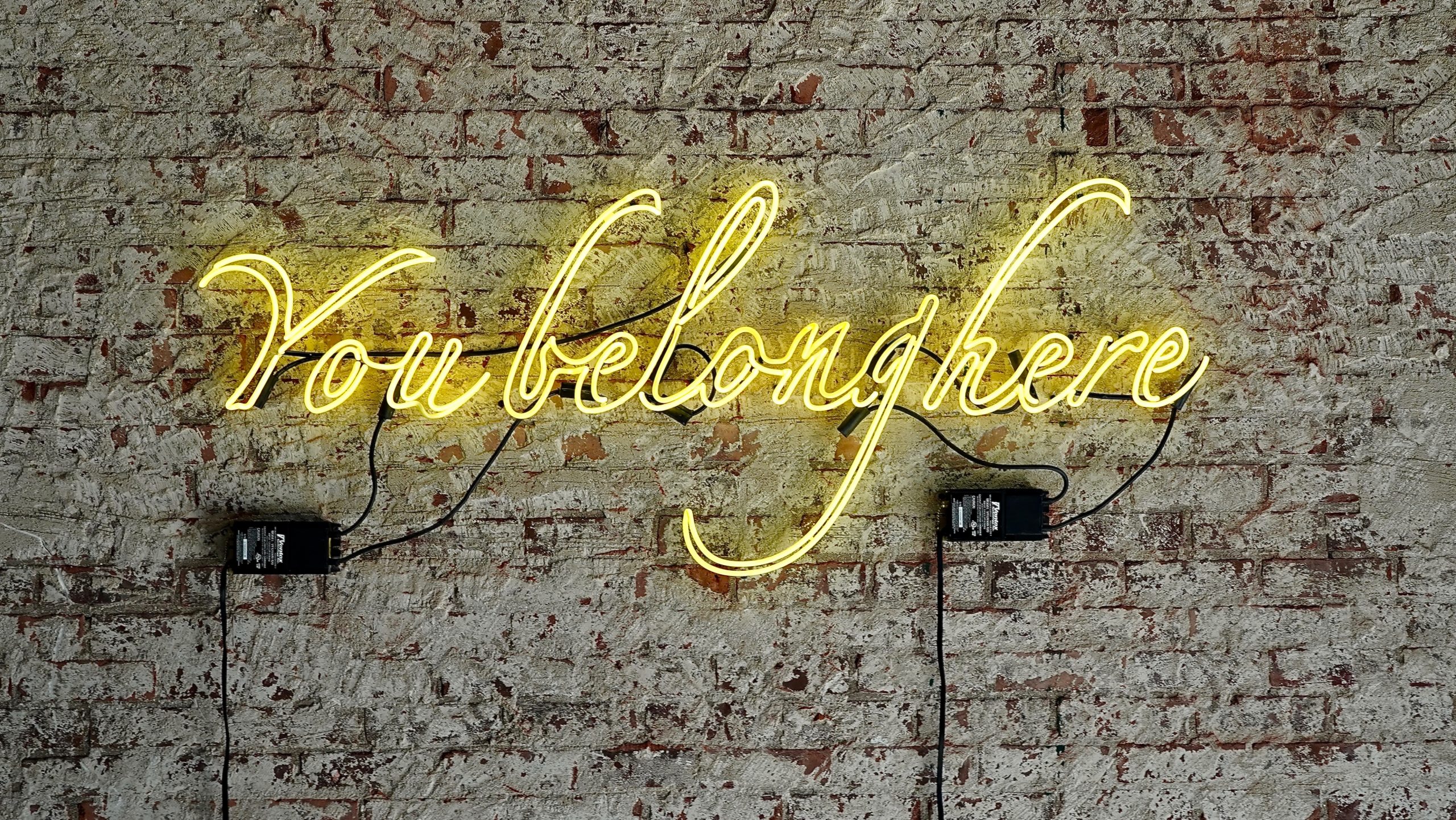
Tavares Strachan
You Belong Here
2013
Yellow neon, two transformers
Courtesy of the artist
In You Belong Here, Tavares Strachan reclaims a sense of belonging that has been stolen by hegemonic notions of foreignness. “Here” refers to the place in which the work is installed, presenting a new context in each geographical location. When approaching You Belong Here, the viewer has the option to consider the veracity of Strachan’s statement and, by doing so, is performing an act of agency in determining one’s own belonging in the space where the work is perceived.
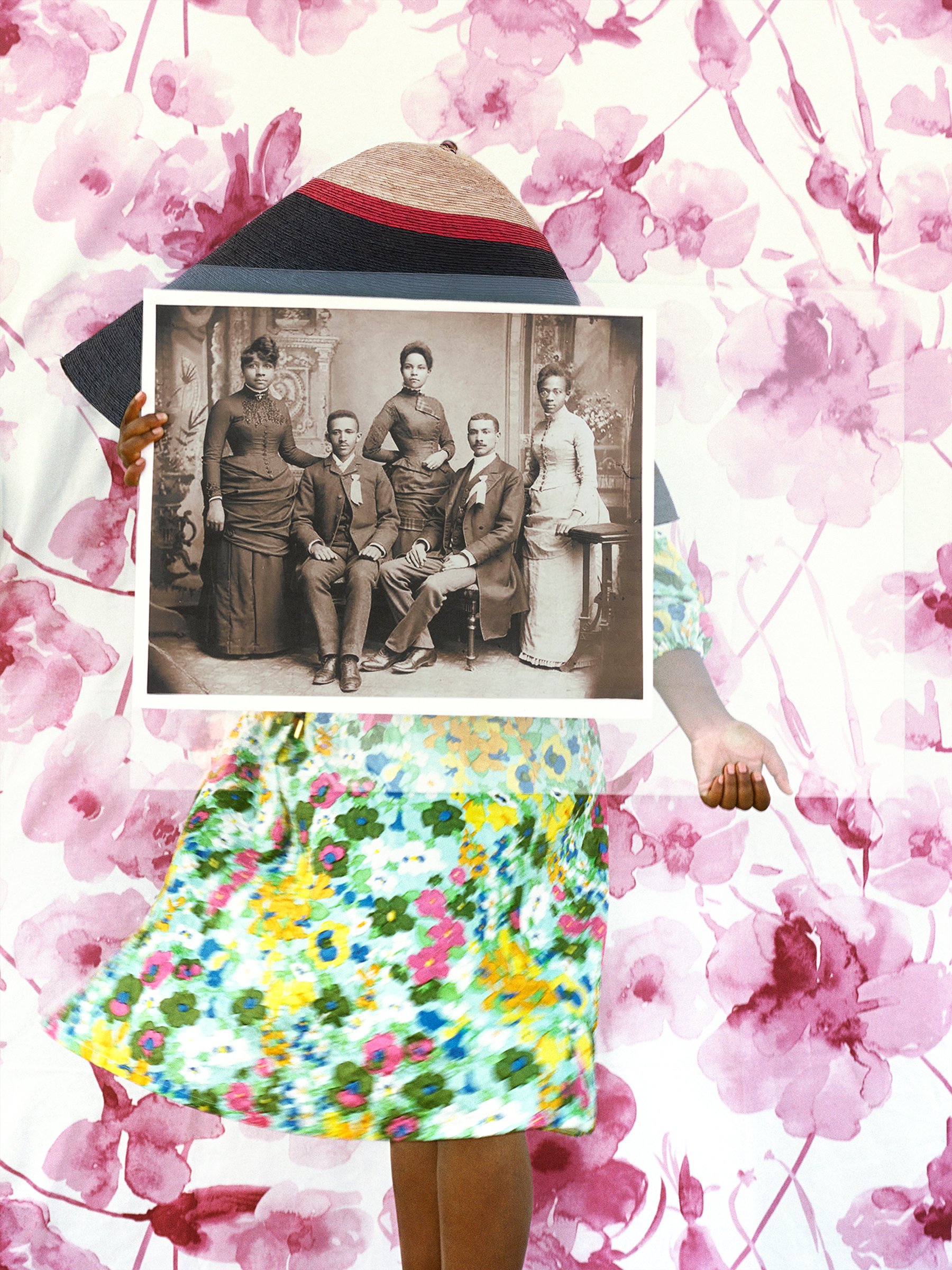
Xaviera Simmons
Sundown (Number Five)
Sundown (Number Fifteen)
2018
Chromogenic color print
Courtesy of the artist
Xaviera Simmons explores the legacies and systemic injustices that American history has rendered invisible. Her expansive, ongoing series, which includes Sundown (Number Five) and Sundown (Number Fifteen), references “sundown towns,” a term historically used to identify communities that did not welcome Black Americans after dark. In these photographs, the past and present intermingle as the artist positions herself within the landscape to serve as a witness and character, symbolically narrating moments of racial prejudice in the United States.
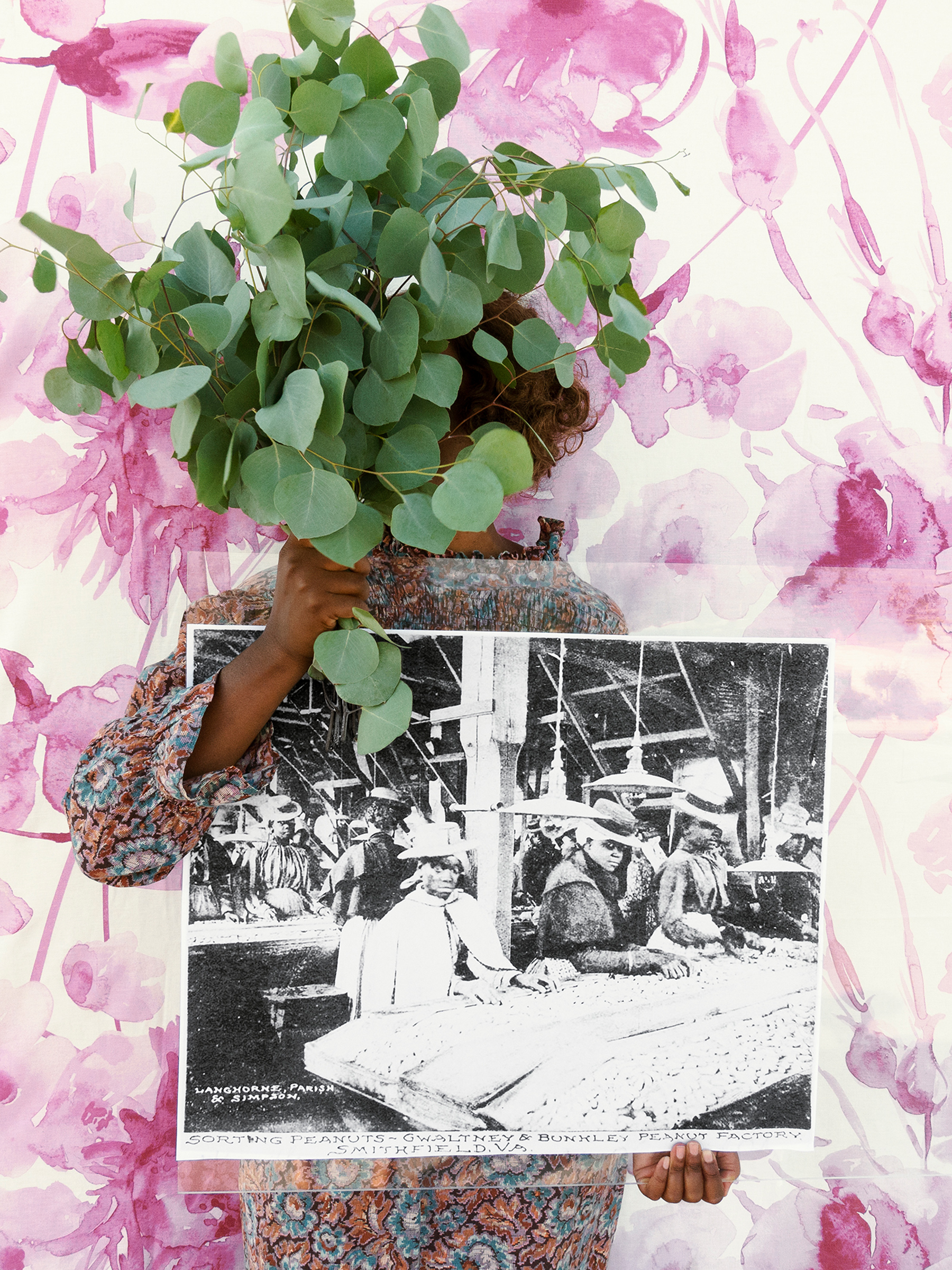
The Gold Miner’s Mission to Dwell on the Tide Line, one of Xaviera Simmons’s signature text-based paintings, employs texts and language—both authored by the artist and sourced from historical documents—to expose past conflicts. Drawing inspiration from the traditions of jazz composition, Simmons uses improvisation to construct a series of breaks, repetition, and sequencing in her re/telling of the narrative she has selected.
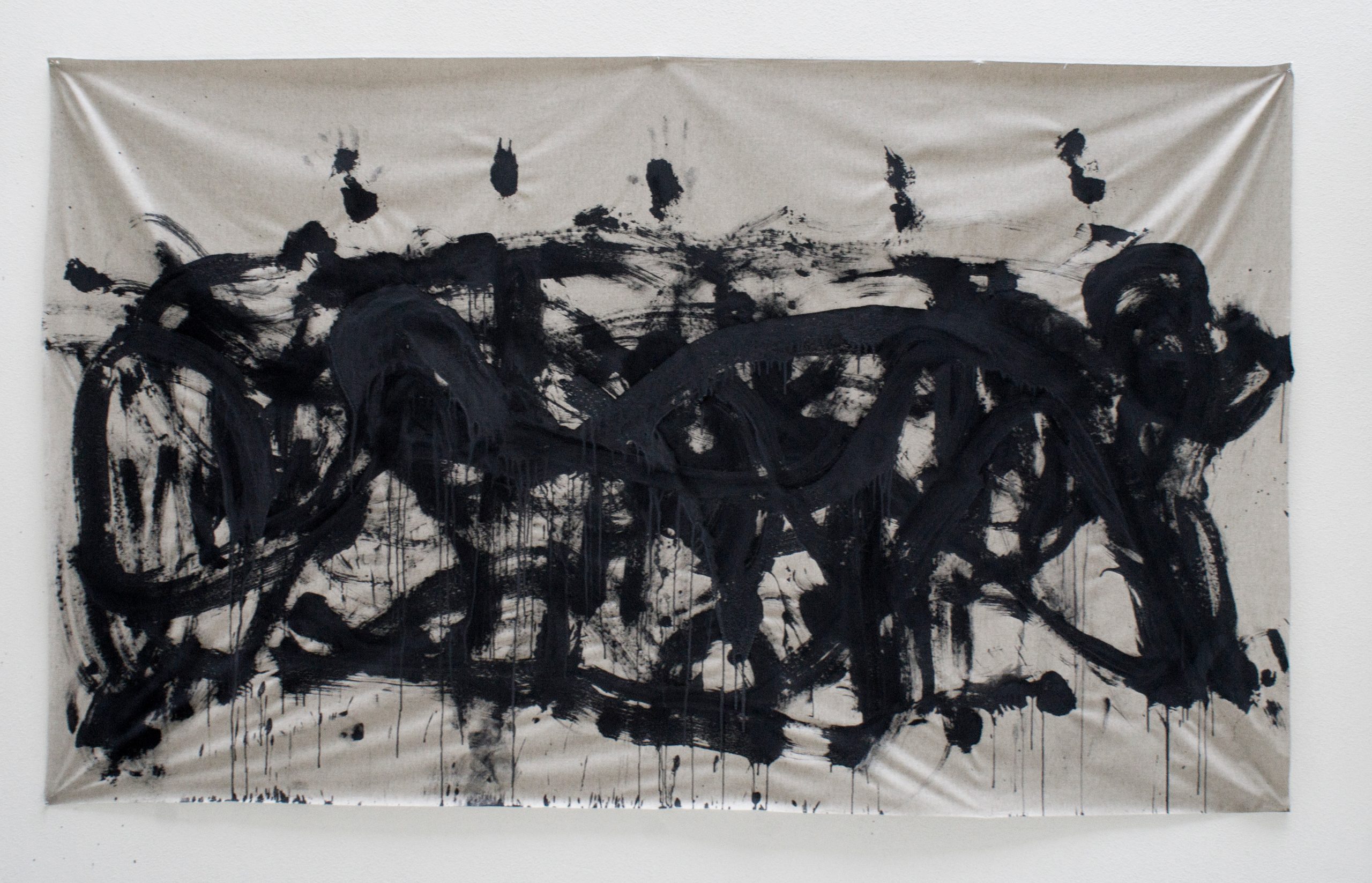
Jarrett Key
Hair Painting #15
2017
Tempera on canvas
Hair Painting #14
2019
Video (10 mins., 2 secs.)
Courtesy of the artist and David Castillo Gallery
In the process of creating a painting (as demonstrated in the accompanying video), Jarrett Key uses their own hair as a paintbrush to pull paint across the surface of an unstretched canvas. Invoking the legacy of their late grandmother, who often cited biblical tales such as Samson and Delilah, Key responds rhythmically to their memory of such storytelling and builds their saturated marks gradually, like words in a sentence. Key’s hair-paintings also incorporate other forms of oral narratives—songs, spiritual hymns, and family conversations—which could not be written by their elders.
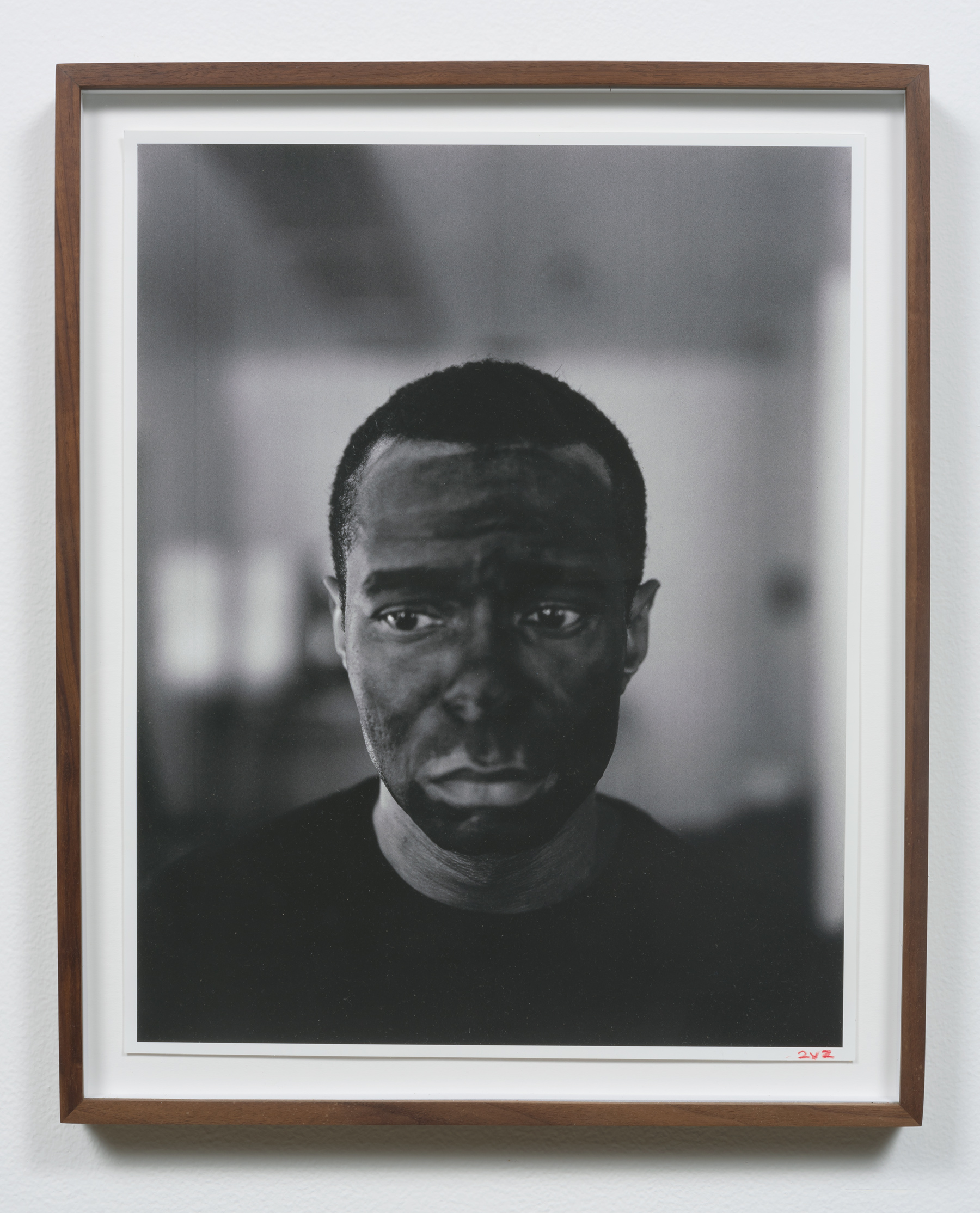
Edgar Arceneaux
First Dress: Frank Lawson as Ben Vereen as Bert Williams
2017
Black and white photograph
Courtesy of the artist
Video by Wael Morcos and Jon Key
Edgar Arceneaux’s photograph First Dress: Frank Lawson as Ben Vereen as Bert Williams refers to Ben Vereen’s performance in honor of the black vaudevillian Bert Williams, which Vereen gave for the televised celebration of President Ronald Reagan’s inauguration in 1981. For his recent project Until Until Until…, Arceneaux worked with the actor Frank Lawson to recreate the full 1981 performance, the crucial closing segment of which was censored. In this image, Lawson’s somber face portrays a state of contemplation that contends with the cyclical and complex racial legacies of the American performance industry.
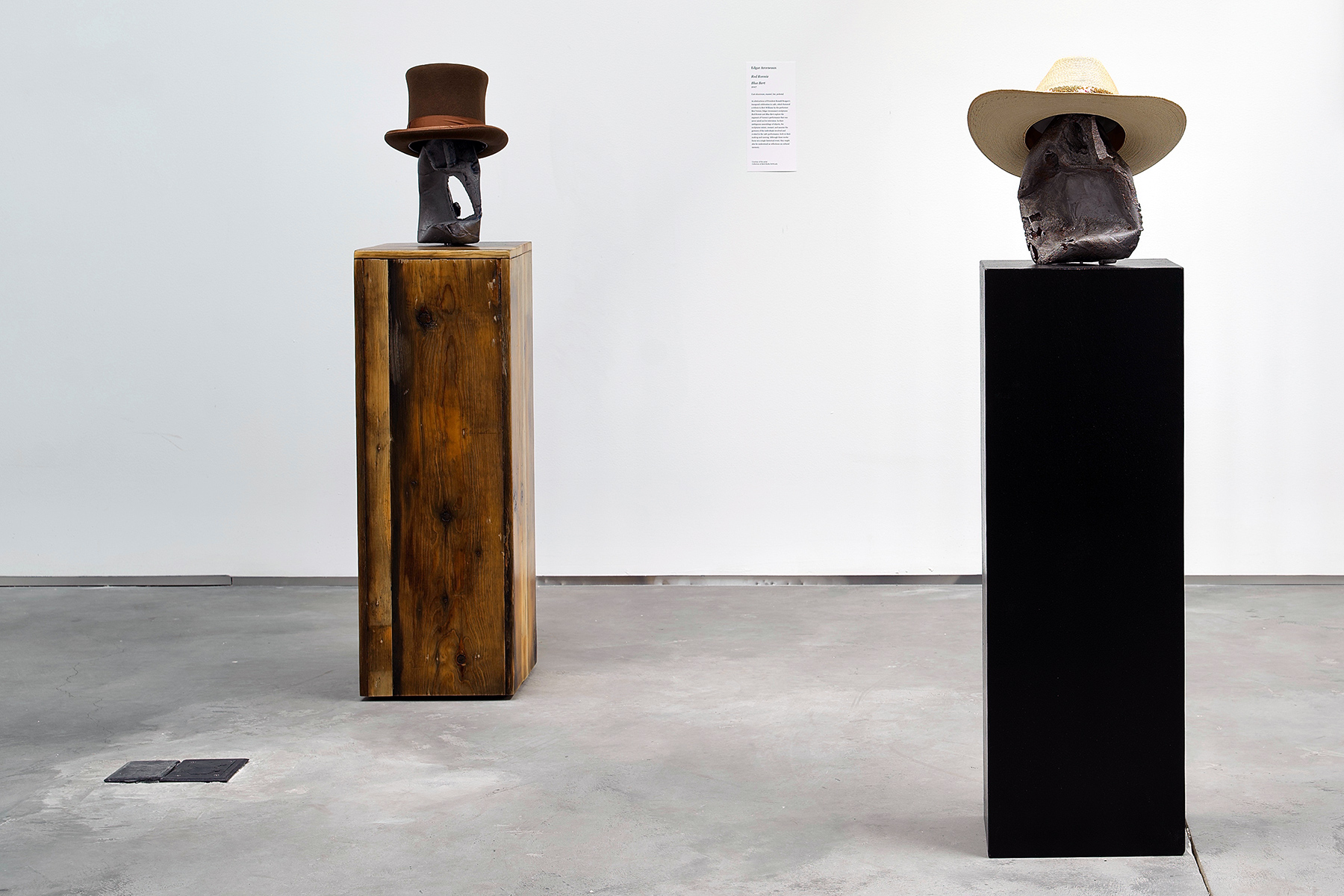
Edgar Arceneaux
Red Ronnie
Blue Bert
2017
Cast aluminum, enamel, hat, pedestal
As abstractions of President Ronald Reagan’s inaugural celebration in 1981, which featured a tribute to Bert Williams by the performer Ben Vereen, Edgar Arceneaux’s sculptures Red Ronnie and Blue Bert explore the segment of Vereen’s performance that was never aired on live television. In their ambiguous assemblage of objects, the sculptures mimic, reenact, and assume the gestures of the individuals involved and evoked in the 1981 performance, both in their making and naming. Although these works focus on a single historical event, they might also be understood as reflections on cultural memory.

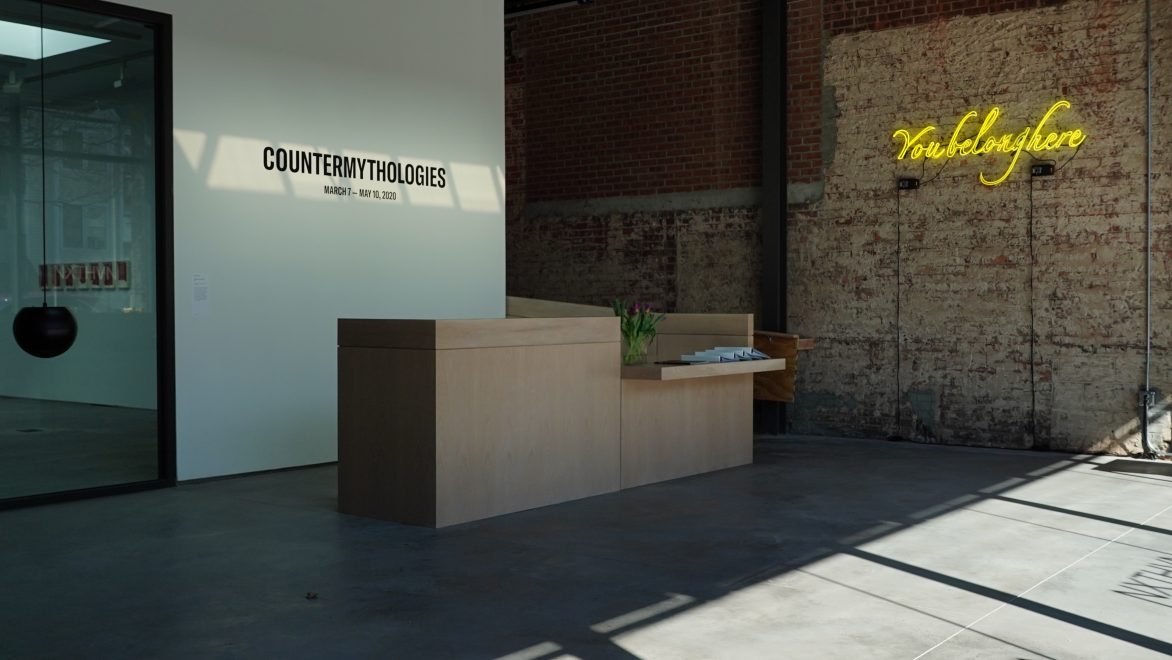
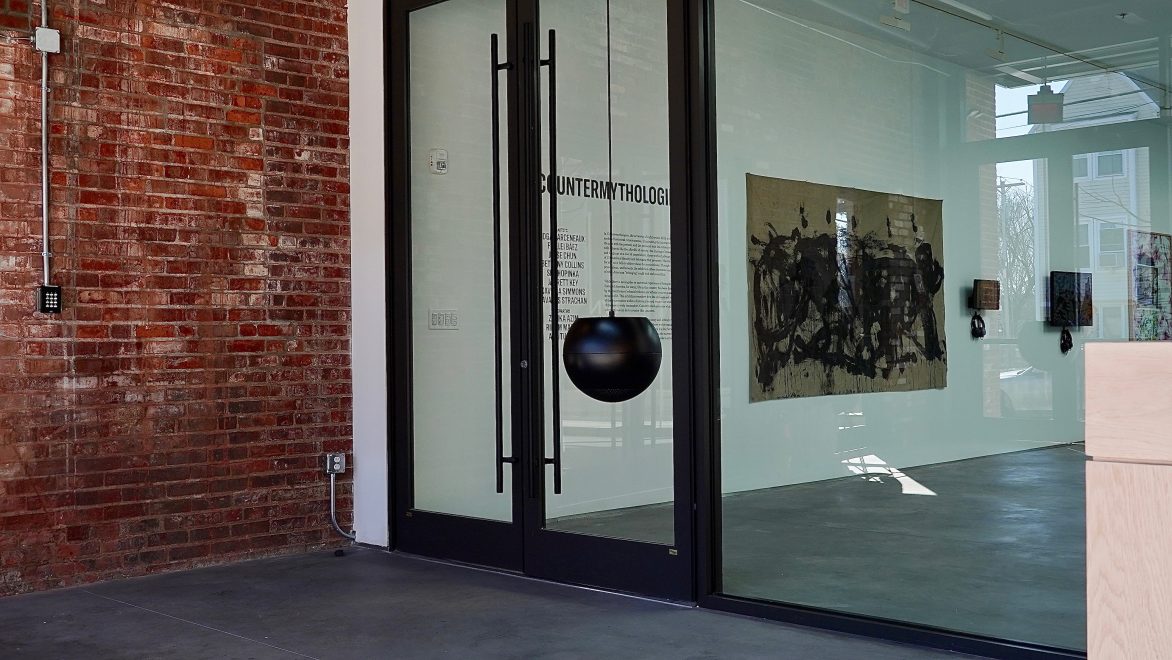
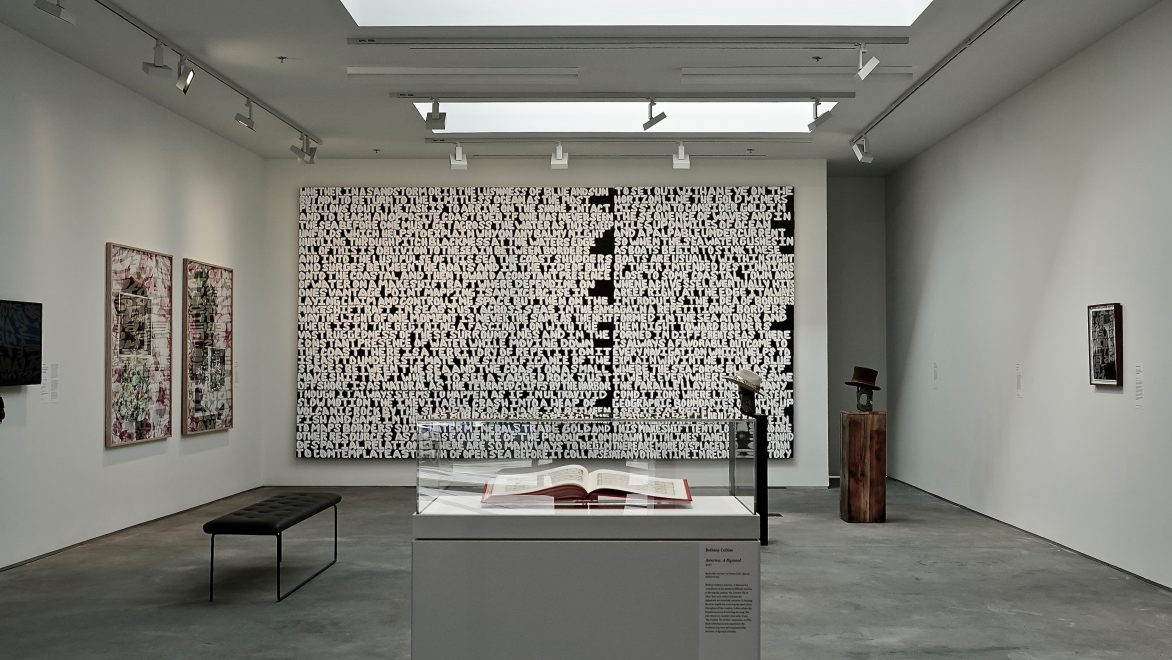

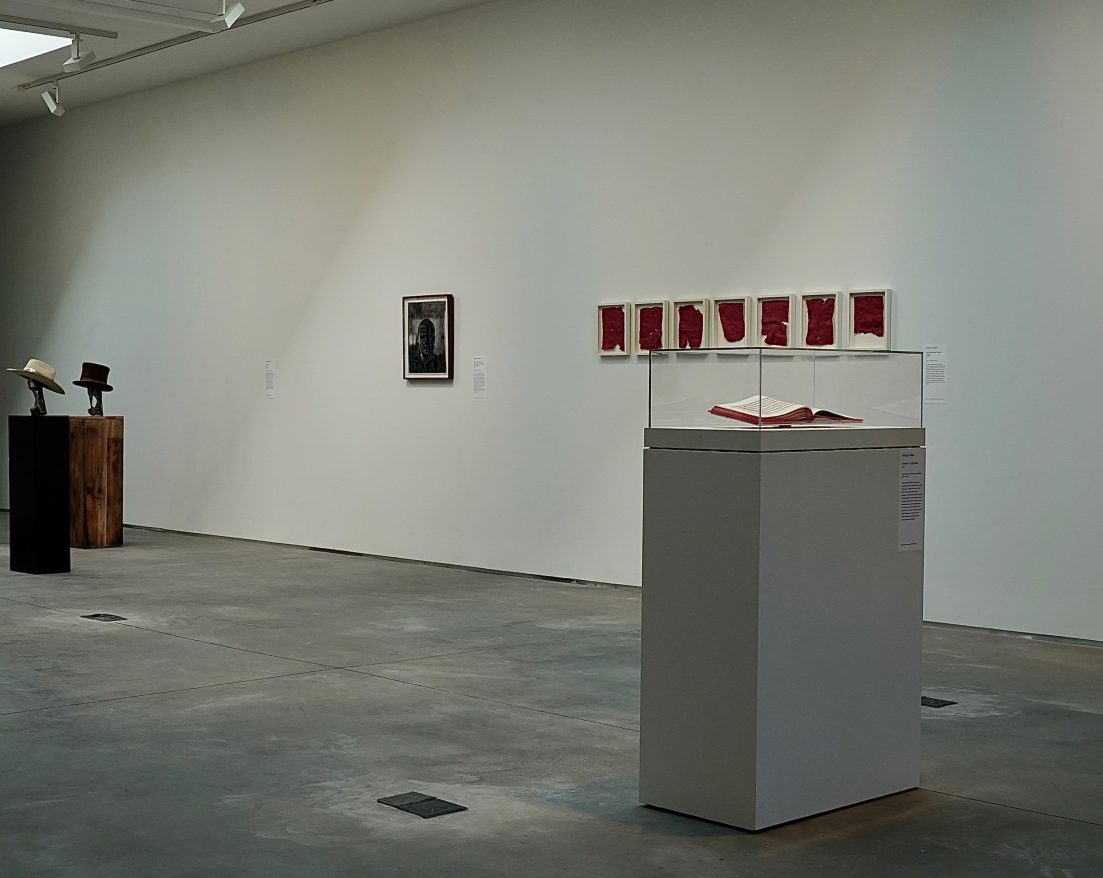
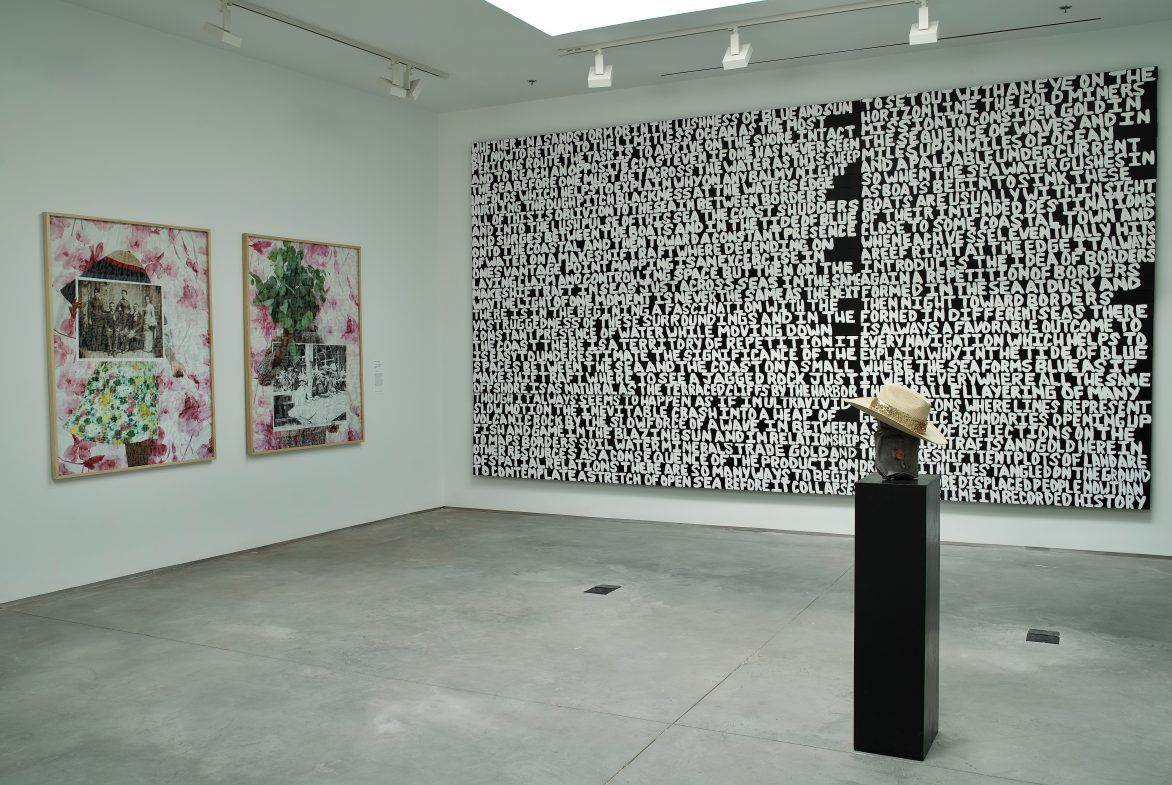
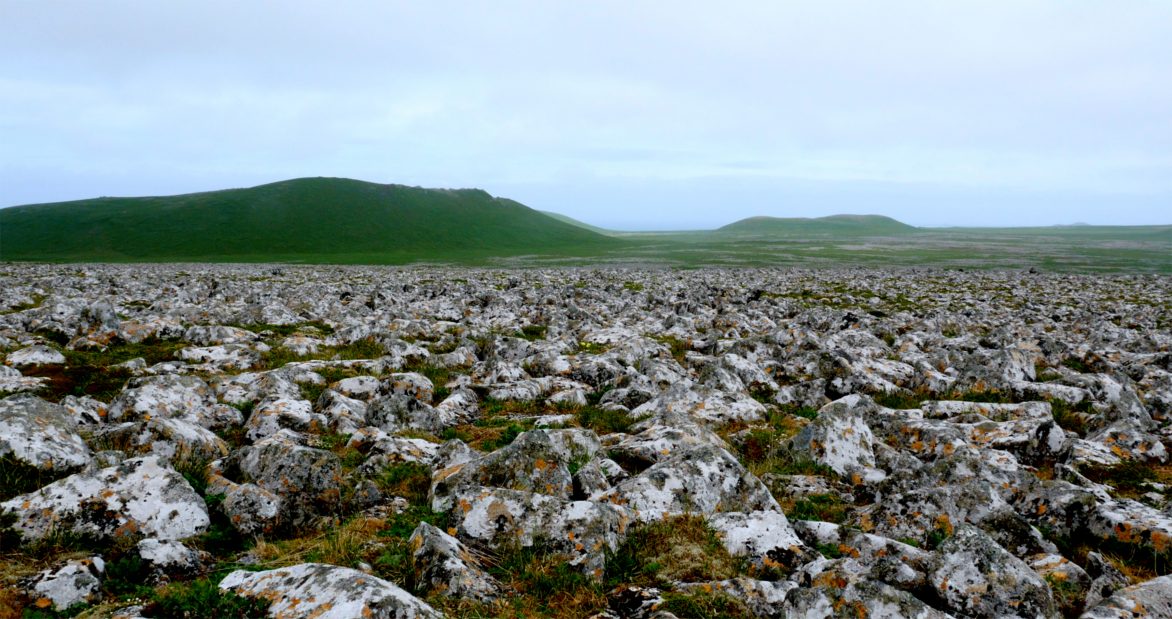

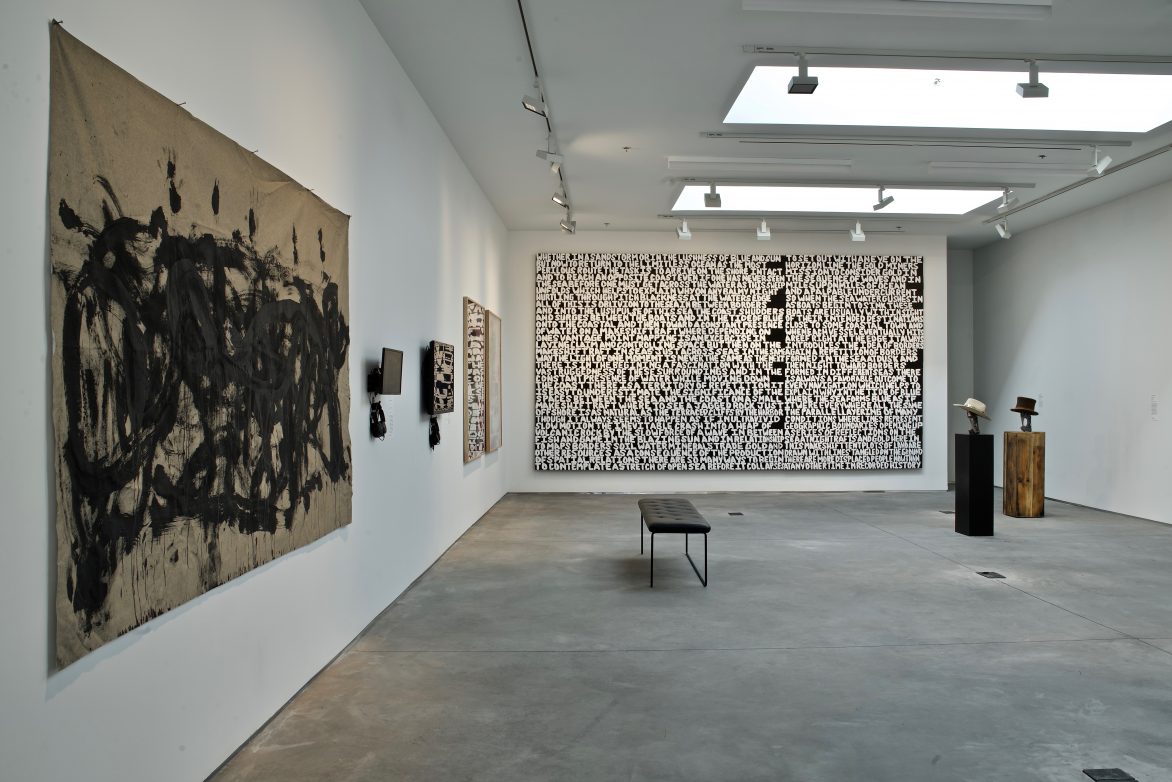






 Jesse Chun
Jesse Chun




